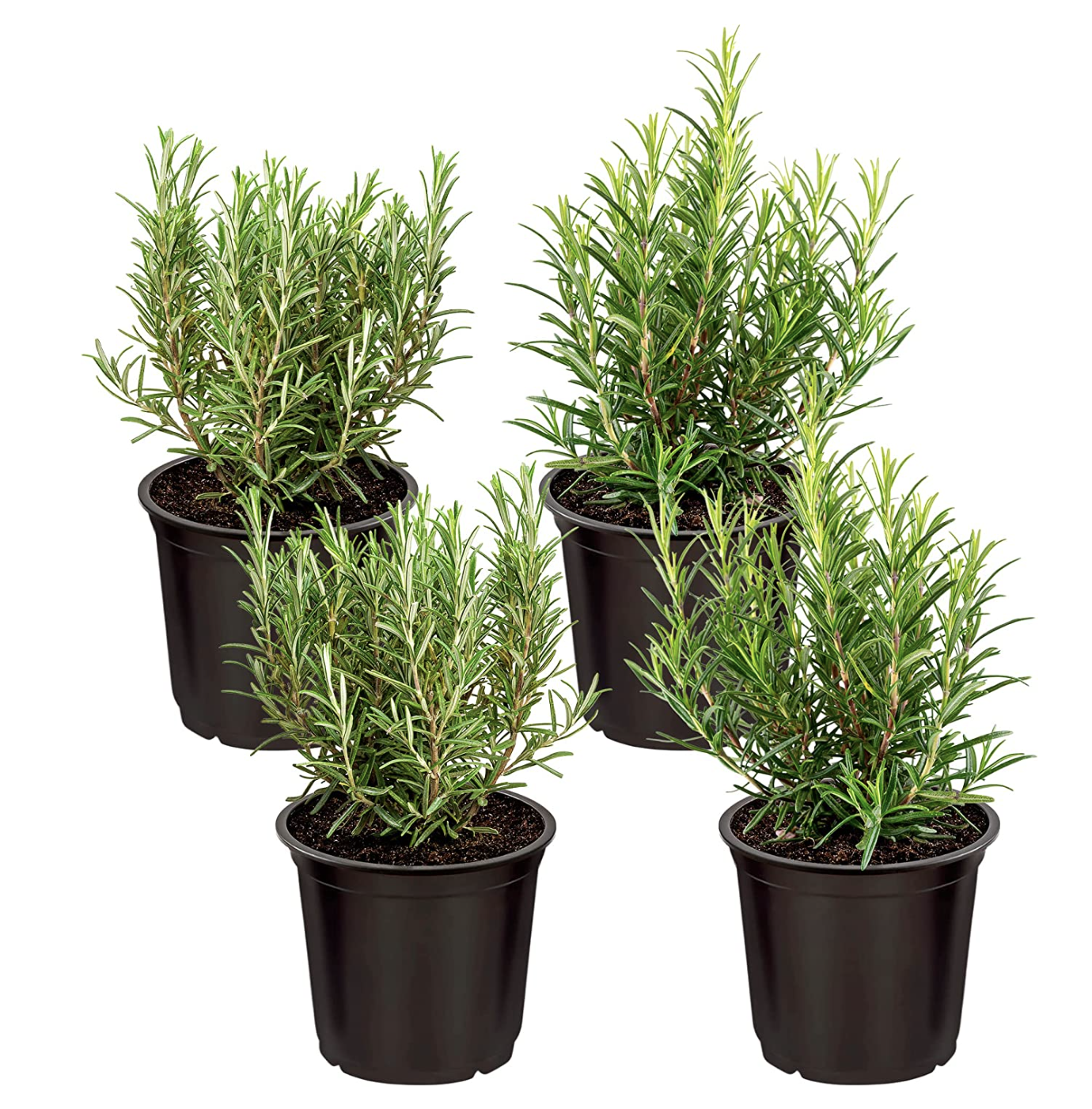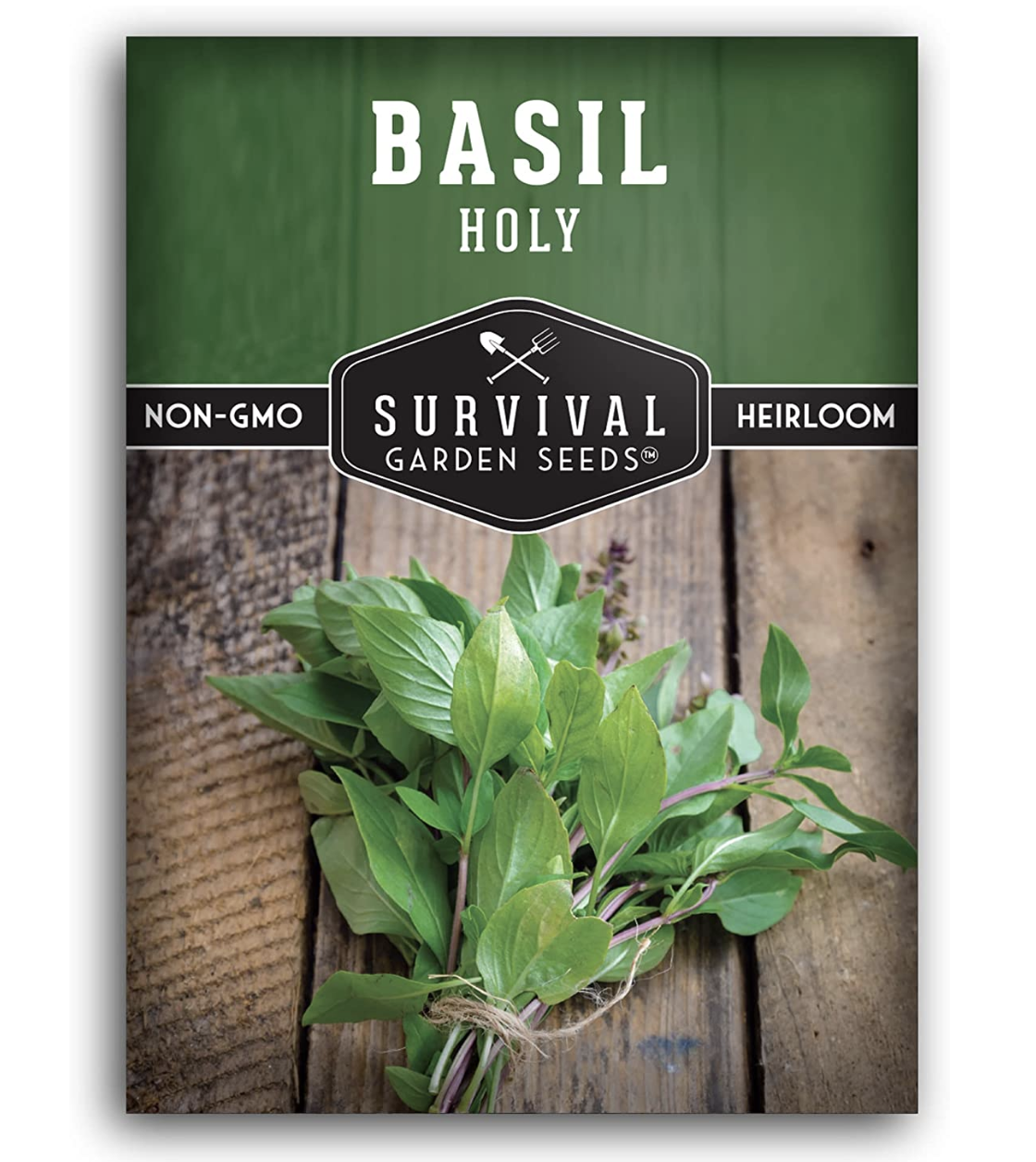What herbs grow best in the kitchen? 5 flavor-packed plants that will you an instant edible indoor garden
An indoor herb garden is easy - and these five plants will flourish in your kitchen. Experts explain how to have an edible display you can eat and cook with all year long

If you enjoy cooking; snipping fresh herbs to add to dishes is part of the fun. Even if you grow herbs in your backyard, it's handy to have some plants in reaching distance when preparing pasta, pizza, curry and other meals. So it's worth knowing the herbs that grow best in the kitchen.
When it comes to creating an indoor garden, there's such a variety to choose from. Firstly think about what you like to cook and which herbs you're likely to use most of. Then consider whether you want to tend to them from seed or fast-track them with a cutting from an existing plant.
'When I began my indoor growing adventures, I relied on transplants almost entirely because I appreciated being able to skip that first big leap in germination,' says garden expert, Elizabeth Millard, author of the Indoor Kitchen Gardening Handbook from Cool Springs Press.
'These days, however, I actually enjoy the planting process, and tend to choose herbs that thrive best in my kitchen.
'For a very small investment you can turn a sunny windowsill into a mini herb farm. One great thing about growing herbs is that you don’t need much, a few mature plants can keep you well supplied.'
What herbs grow best in the kitchen?
'The beauty of growing your herbs indoors is the ability to grow year-round,' says vegetable garden designer, Dana Hopper, co-founder of Home Grown Veggie.
'Growing herbs from seed is always an option. But they can be both slow and difficult to germinate, so if you choose that route, make sure you sow several seeds and keep the top of the soil moist.
'Whatever herbs you're growing, soil is key,' adds Dana. 'Buy the best organic potting soil you can find. Look at the contents on the back of the bag. If you see ingredients such as coir, perlite, feather meal, worm castings, crab meal, kelp meal, oyster shell in any combinations, you’ve got yourself a good potting mix.
'Pick up a small bag of worm castings or compost to “feed” your herbs as they grow. Since plants in small containers need consistent weekly watering, nutrients leach out of the soil more rapidly.
'Adding a small amount of worm castings or compost around the bottom of the plant every 3-4 weeks on watering day replenishes the nutrients so the herbs continue to thrive. Then no additional fertilizer is needed.'
1. Rosemary
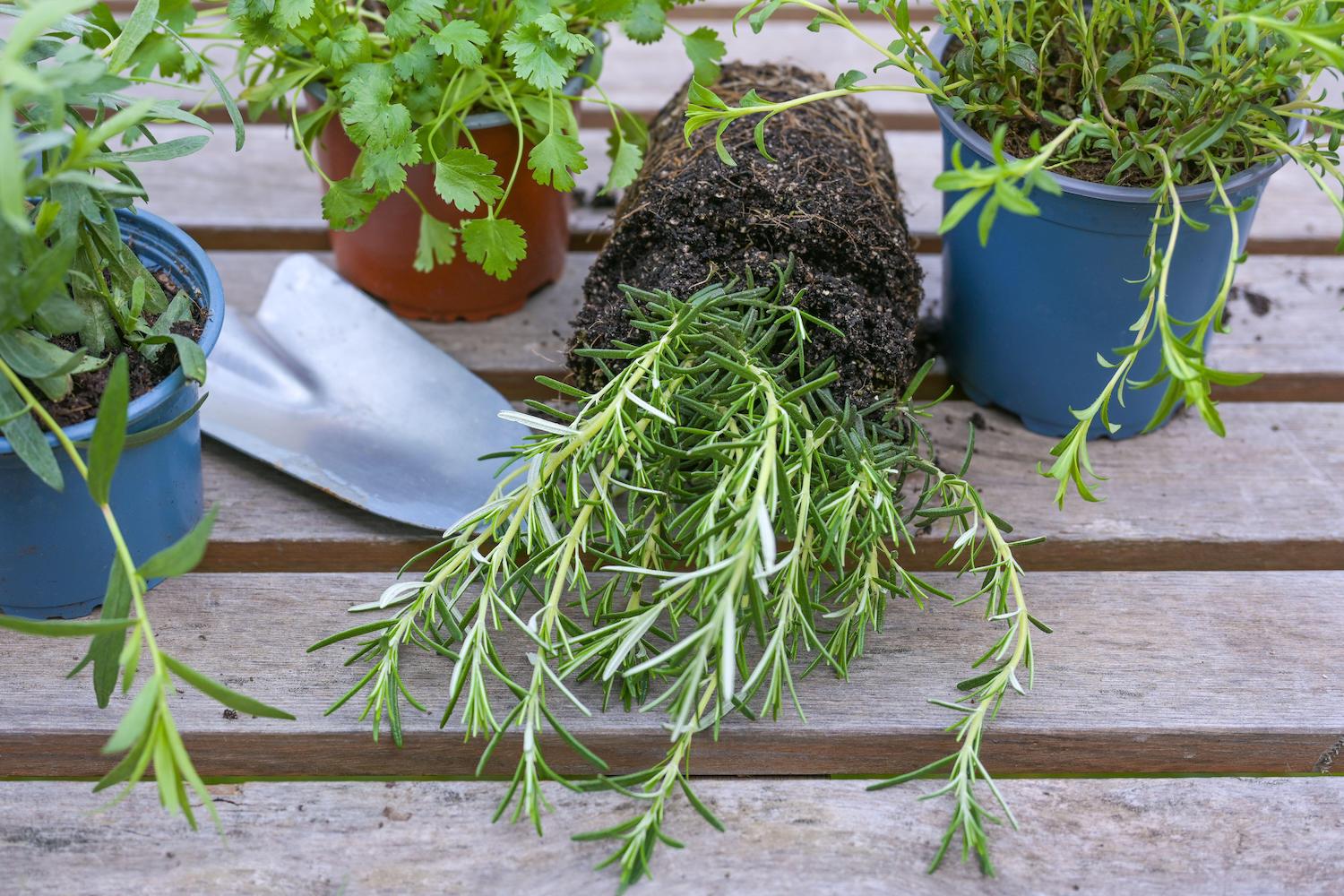
It's become a kitchen trend to have some plants growing as part of the decor. Whether you love seasoning roast lamb and other meats, adding flavour to focaccia and breads or infusing stews and soups, a few sprigs of rosemary will pack an aromatic punch. Architectural in shape, it looks good as part of a modern kitchen garden.
'I’ve found that my best indoor rosemary comes from cuttings off rosemary in my garden, but it’s also somewhat easy to grow by seed,' says garden expert, Elizabeth Millard. 'Watch out for overwatering, since rosemary tends to prefer drier soil, and be sure to choose a variety that does well with indoor growing, like "Blue Spire".’
'Rosemary is super easy and asks very little from you, the gardener,' adds Dana Hopper. 'Having evolved in an arid climate, it doesn’t need much water and it's not fussy what kind of soil it grows in. Give it sun, water occasionally, don’t bother to fertilize, it’ll be fine.'
2. Basil
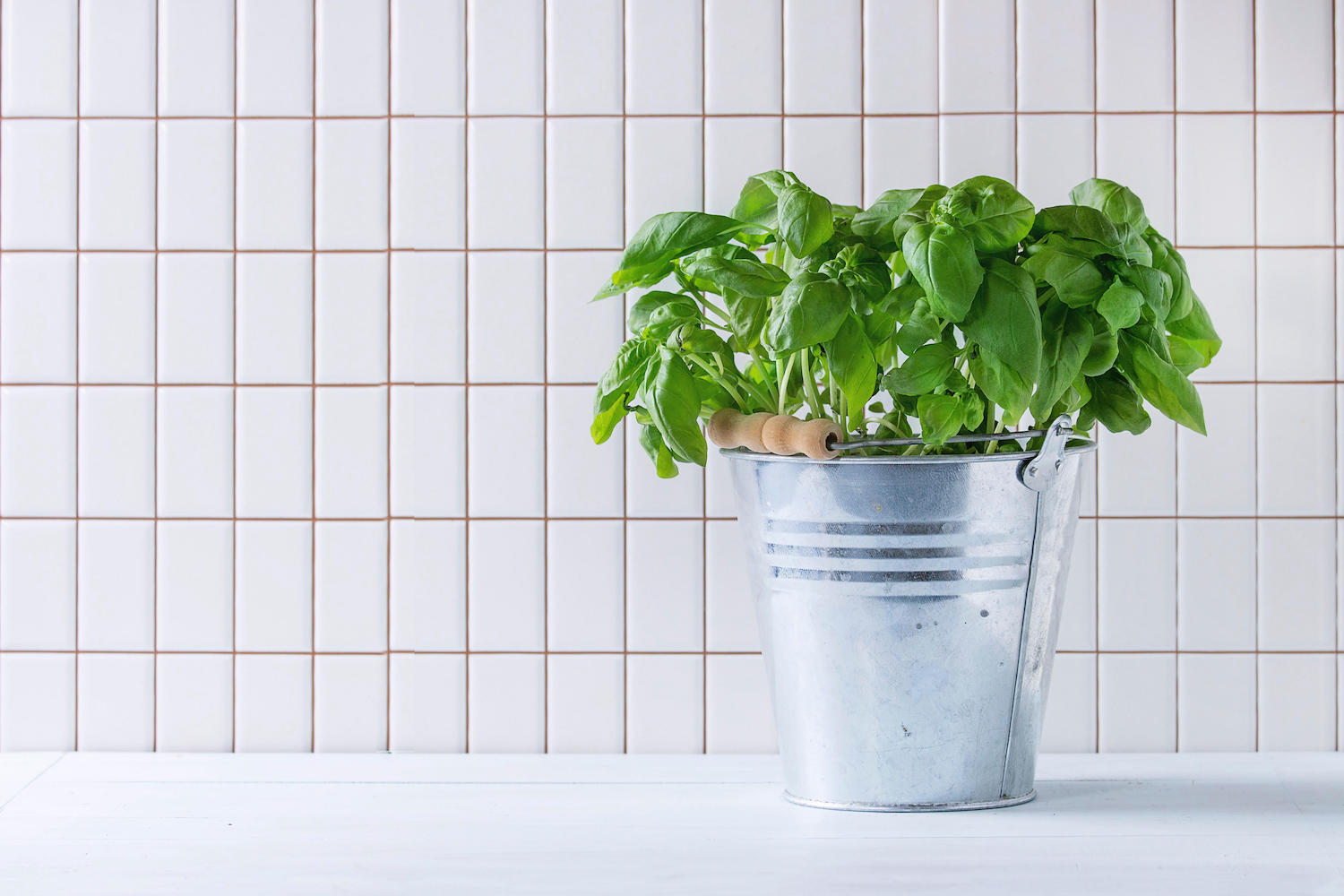
Bails is popular in Italian foods such as pasta, pizza, soups and salads, as well as other Mediterranean cuisines. Unsurprisingly, it loves heat, so when it comes to how to turn your windowsill into an indoor garden, place this herb on your sunniest ledge.
'The easiest way to grow basil is from a cutting,' says Dana Hopper, co-founder of vegetable garden design company, Home Grown Veggie. 'Clip a stem and place in a glass of water until roots form, then transfer to a pot with some soil, or purchase a small plant at the grocery or nursery.
'Basil’s needs are simple. Water deeply once a week so the soil remains moist but not soggy.
'Harvest basil from the top of the plant down to the next set of leaves. You’ll be cutting a small cluster of leaves instead of one leaf at a time. This helps the basil to grow into a bushier, more productive plant.'
3. Cilantro
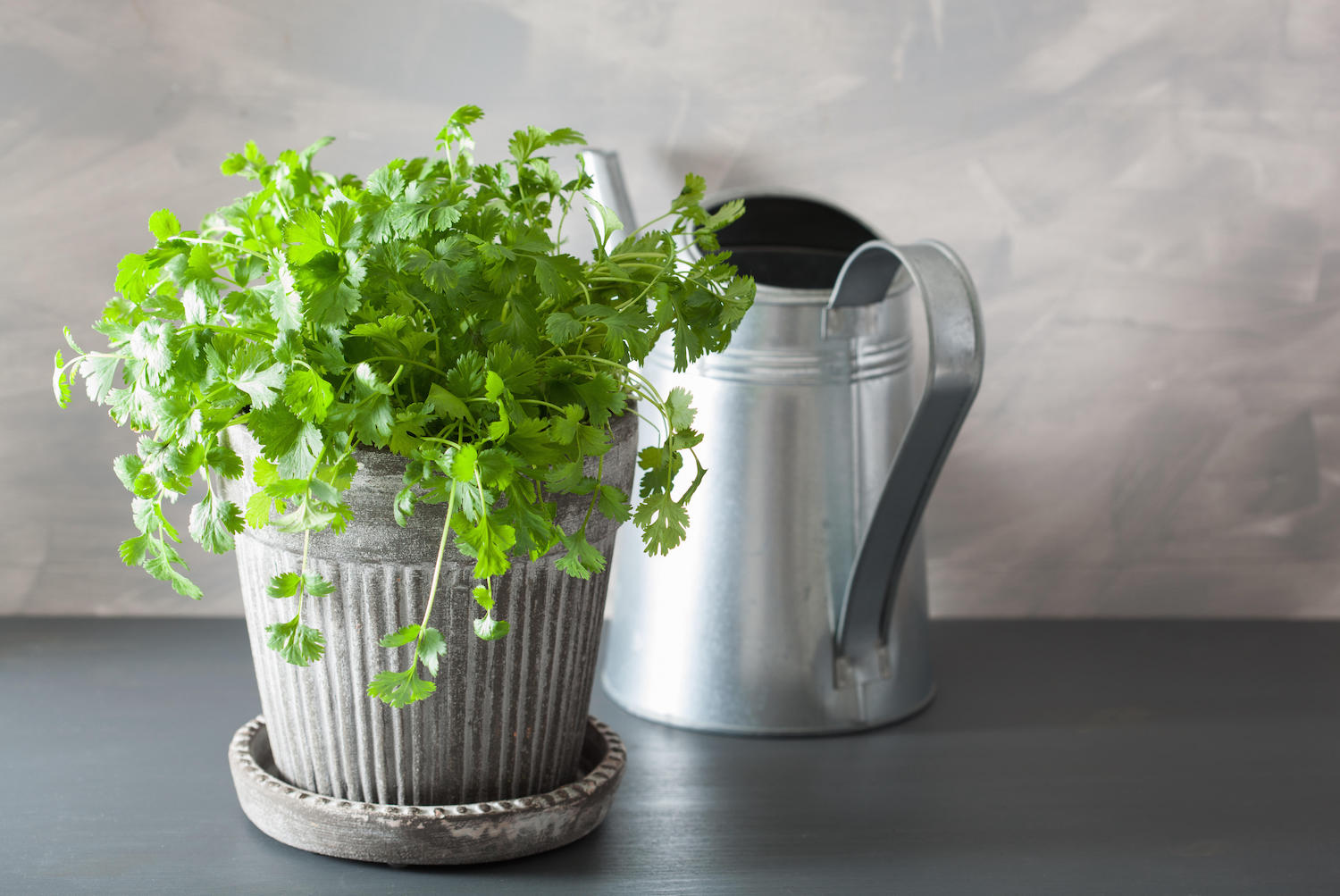
Delicious in curries, stir fries, salsas and so much more, cilantro, is a welcome addition to an indoor herb garden. As for how to grow cilantro, it likes a sunny spot (although not direct scorching heat), so ensure it has some shade too.
It also likes moist (but not soggy) soil, so grow it in its own pot, or with plants with similar requirements, such as parsley or dill. It's not suited planted next to rosemary, which prefers a well-drained, drier soil.
'Herbs just don’t do well at all in any situation where they’re sitting in water, so choose a container or pot that allows for ample drainage,' says Elizabeth Millard. 'Even throw some pebbles in the bottom. Your herbs will thank you.'
'While cilantro doesn’t require quite as much water as basil, their needs are similar. Just avoid leaving any water in the tray beneath the pot. They don’t like having “wet feet”,' says Dana Hopper.
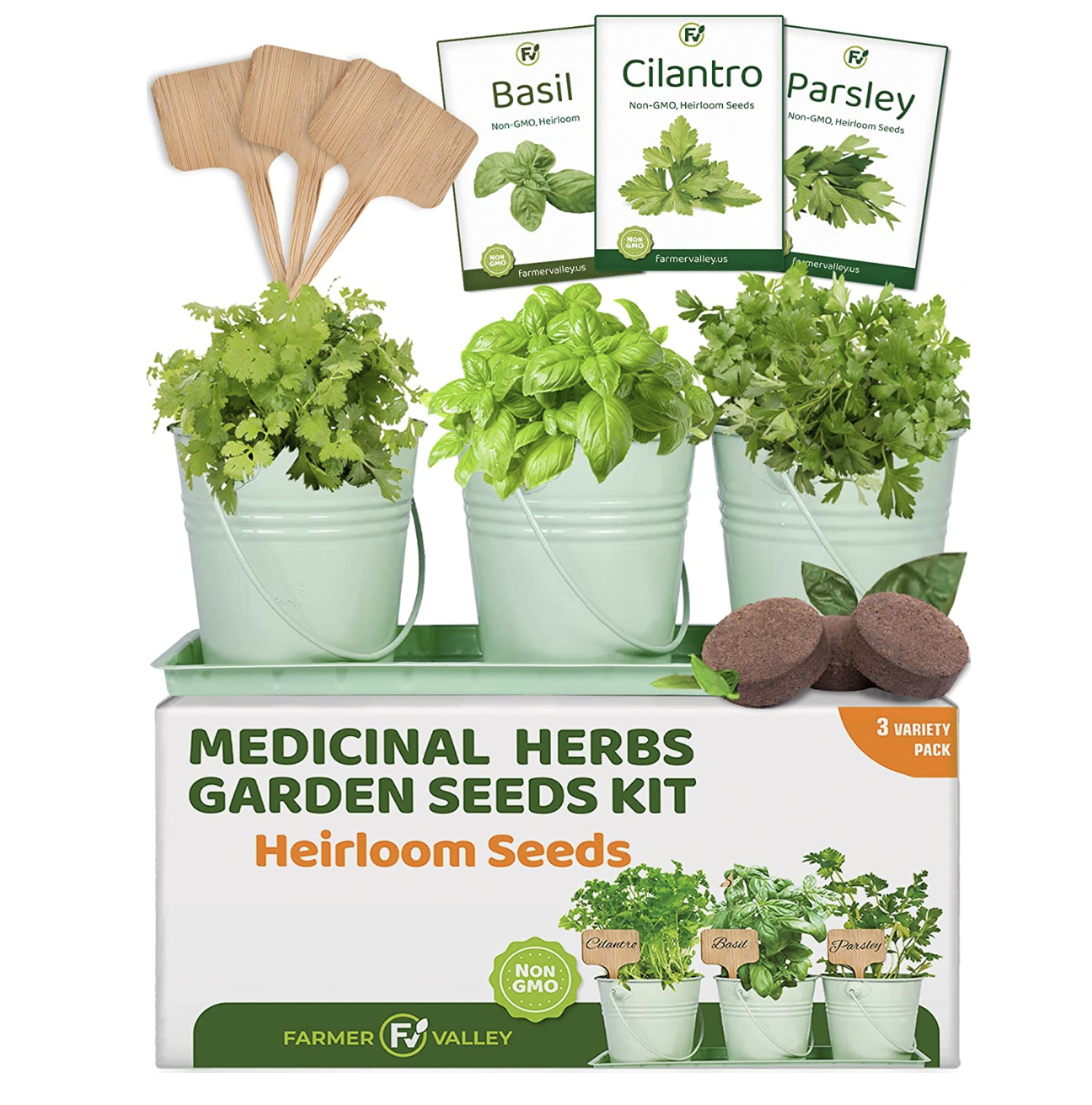
With pots, compost and the herbs themselves, this kit will get you going for a kitchen garden.
4. Parsley (flat leaf and curly)
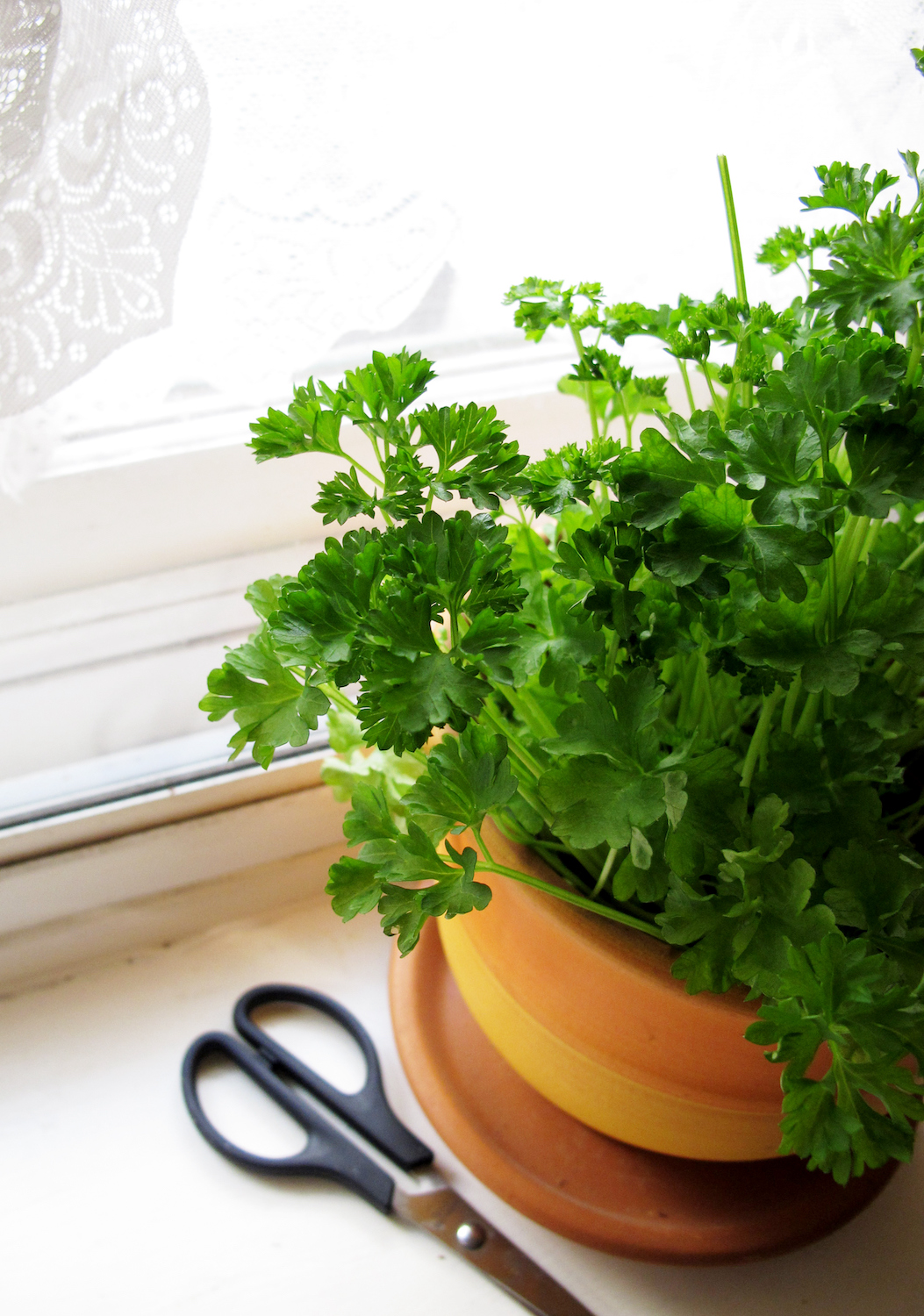
So much more than a pretty garnish, parsley is rich in antioxidants and nutrients and adds an aromatic boost to soups and stews. It's also a key ingredient in cold dishes such as tabbouleh and many more Middle Eastern and Mediterranean recipes. Whether you grow flat leaf or curly, parley's needs are similar to cilantro.
'Cilantro and parsley can tolerate partial shade, while basil loves lots of sunshine,' says California-based vegetable garden designer, Dana Hopper. 'South or East facing windows provide good light. If your plants start to lean toward the window, rotate them occasionally to make sure all the foliage is getting plenty of sunshine.
'And although basil, cliantro, and parsley can grow together, I prefer to grow them in separate pots indoors since their needs vary slightly. It can also be really easy to harvest parsley when you meant to harvest cilantro.'
5. Lemongrass
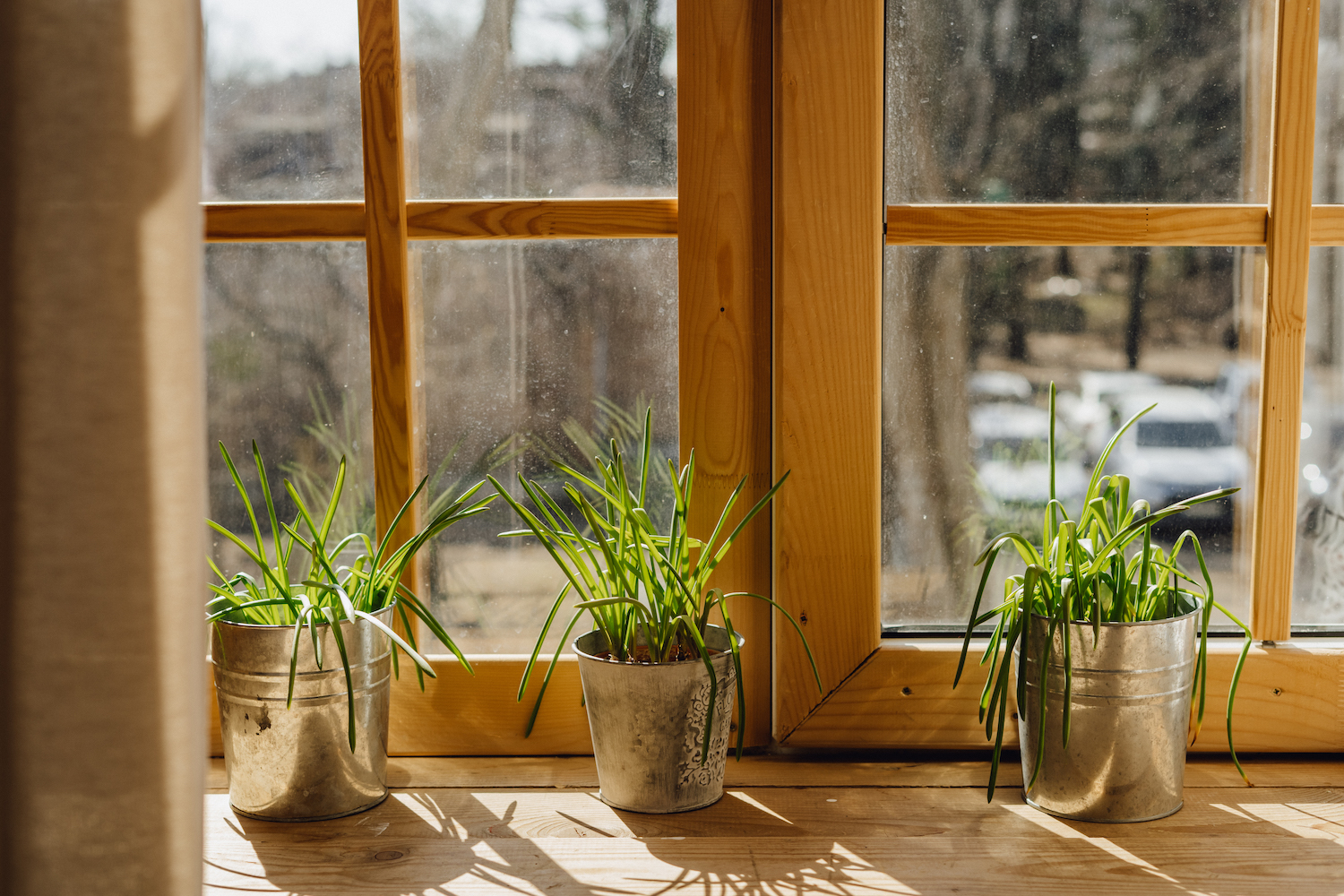
Fans of Thai or Vietnamese food will be delighted to know that lemongrass is an easy herb to cultivate in a kitchen. In fact, due to its tropical origins, it likes warmth. So outside of USDA zones 8b and 9, it would need to be taken indoors in winter, if you wanted to grow it outside.
'You don’t even plant this one from seed; just buy a stalk of [organic] lemongrass from a grocery store or farmers’ market, trim the top, and put the stalk in a few inches of water,' says Elizabeth. 'The stalk will produce roots on its own and dozens of new shoots, and you can harvest from these.'
Be The First To Know
The Livingetc newsletters are your inside source for what’s shaping interiors now - and what’s next. Discover trend forecasts, smart style ideas, and curated shopping inspiration that brings design to life. Subscribe today and stay ahead of the curve.
Jacky Parker is a London-based freelance journalist and content creator, specialising in interiors, travel and food. From buying guides and real home case studies to shopping and news pages, she produces a wide range of features for national magazines and SEO content for websites
A long-time contributor to Livingetc, as a member of the team, she regularly reports on the latest trends, speaking to experts and discovering the latest tips. Jacky has also written for other publications such as Homes and Gardens, Ideal Home, Red, Grand Designs, Sunday Times Style and AD, Country Homes and Interiors and ELLE Decoration.
-
 Italian Kitchen Trends — 5 Emerging Ideas From the Chicest Italian Designers That I Predict Will Go Global in 2025
Italian Kitchen Trends — 5 Emerging Ideas From the Chicest Italian Designers That I Predict Will Go Global in 2025Fresh from Milan Design Week, these are the exciting finishes, styles, and innovative materials I can't wait to see in more kitchens this year
By Faiza Saqib Published
-
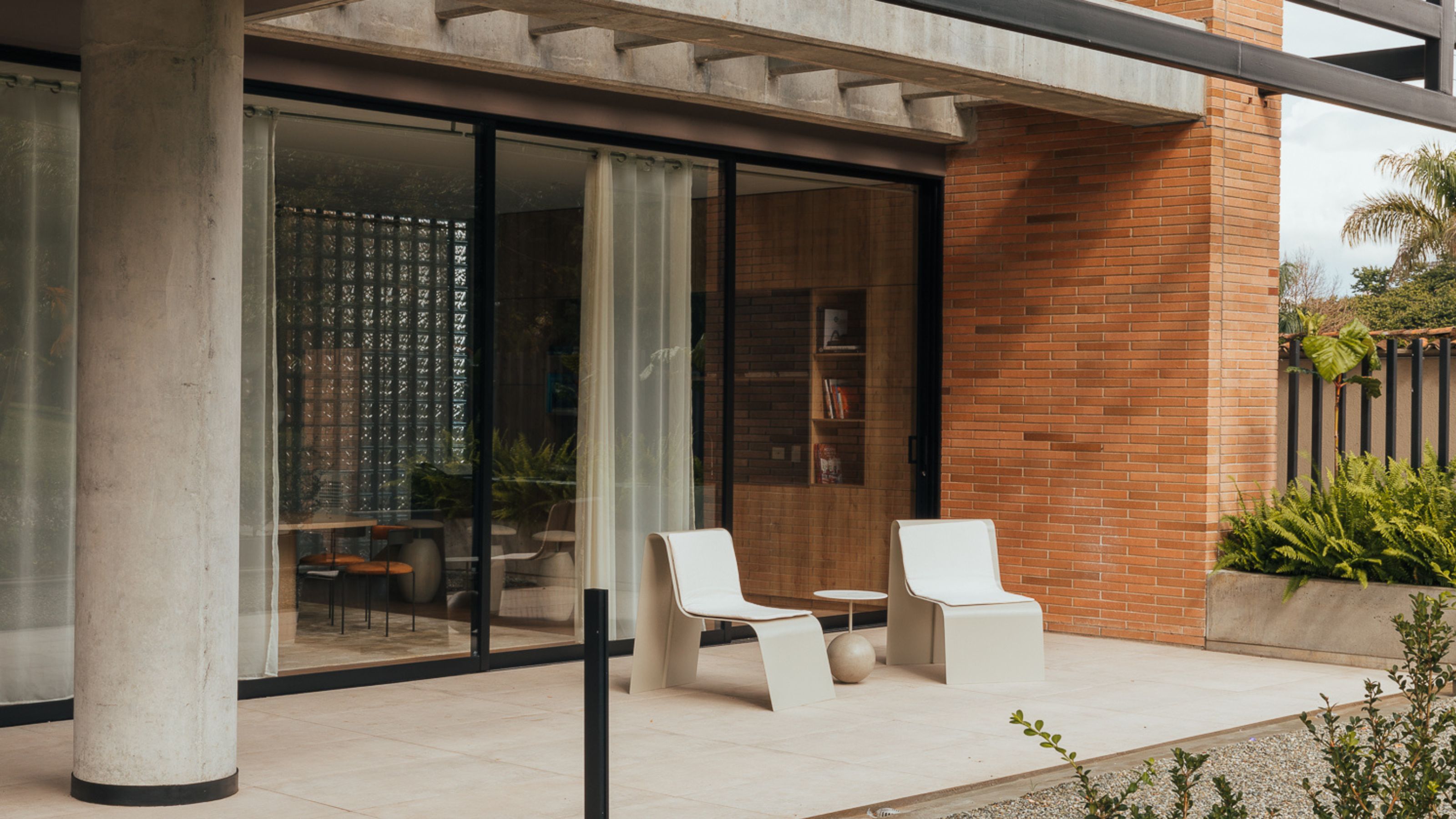 Small Patio Ideas — 8 Clever Ways to Style Up Even the Tiniest of Outdoor Spaces
Small Patio Ideas — 8 Clever Ways to Style Up Even the Tiniest of Outdoor SpacesIf you're dreaming of turning your small patio into a dream space the right combination of practical and creative ideas will help you max up its potential
By Sarah Wilson Published
